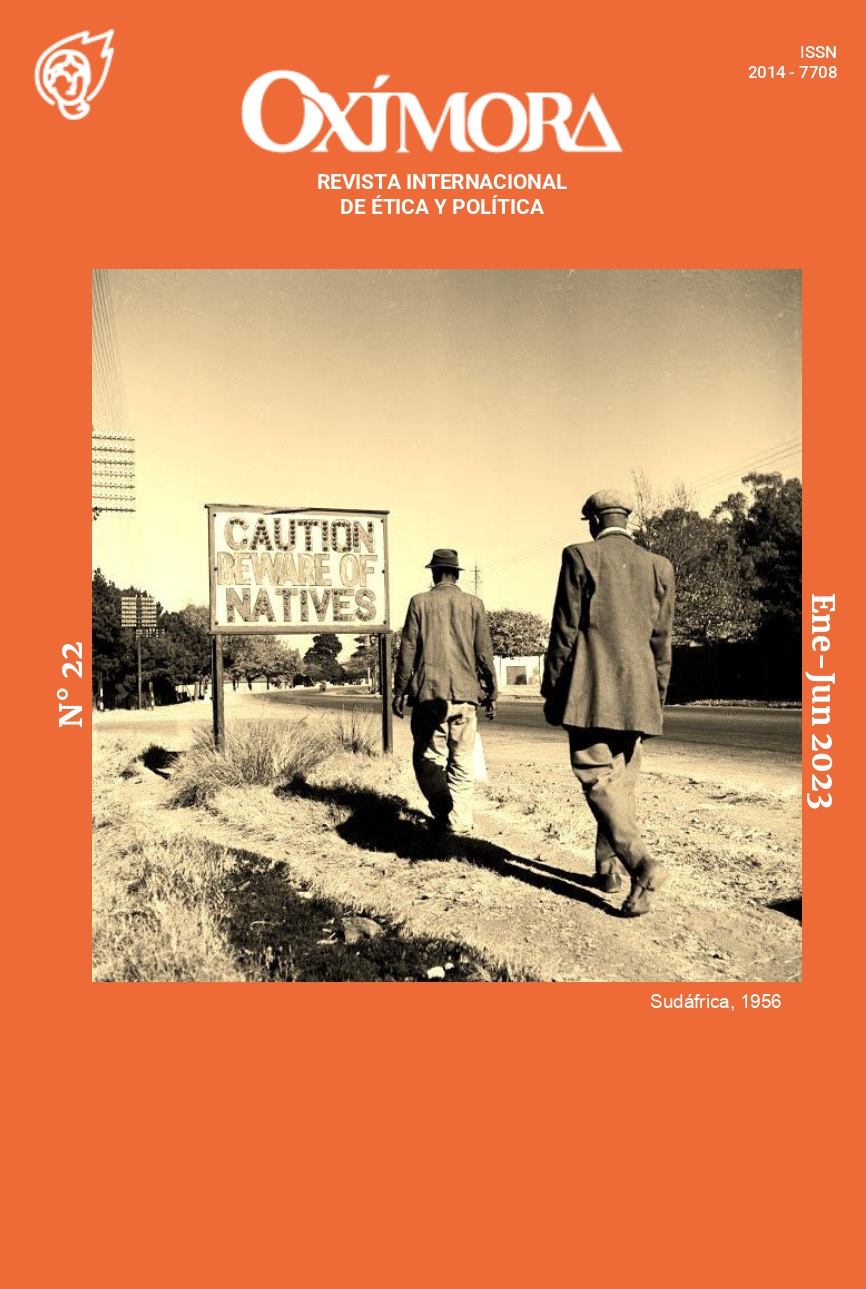Political Tactics and Facework in Teaching Student Discourse
DOI:
https://doi.org/10.1344/oxmora.2023.i22.41036Keywords:
Teaching Student Discourse, Social Image, Facework, Political TacticsAbstract
In this article we propose to resolve questions related to the activities linked to the construction of the image that students teaching elaborate in the communicative exchange; the type of discursive strategies they adopt, whether politeness, impoliteness and self-facework, as well as the form of the image: repair, protection or enhancement. We articulate with the above the political tactics that are configured in the normalist discourse and its functioning. Based on the theory and the knowledge of the corpus, we start from the following assumption: The care of the self-image by the normalistas is carried out through self-image activities, particularly in the form of enhancement, they resort to the tactics of legitimization and resistance to strengthen the image of themselves as teachers and to the delegitimization of the teachers of university origin to distance themselves from them. In this study we turn to Goffman's social image theory and cultural sociopragmatics with the contributions of Bravo and Hernández; for the study of political tactics to the proposals of Chilton and Schäffner and Chilton.
References
Bourdieu, P. (1997). Razones prácticas. Sobre la teoría de la acción. Barcelona: Anagrama.
Bravo, D. (2021) Atenuación, conflicto interlocutivo e identidad de imagen. Pragmática sociocultural. Revista Internacional sobre lingüística del español, 9(2), 184-205.
________ (2017). Cortesía en español: negociación de face e identidad en discursos académicos. Texts in Process, 3(1), 49-127.
________ (2015). Pragmática sociocultural para el análisis social del discurso. En D. Bravo, y M. Bernal (Eds,). Perspectivas y socioprágmáticas y socioculturales del análisis del discurso (pp. 49-90). Buenos Aires: Dunken.
________ (2012). Cortesía lingüística y communicativa. En S. De los Heros, y M. Niño-Murcia (Eds.). Fundamentos y modelos del estudio pragmático y sociopragmático del español (pp. 114-169). Washington DC: Georgetown University Press.
Chilton, P. (2004). Analysing Political Discourse: Theory and Practice. London &. New York: Routledge.
Chilton, P. y Schäffner, Ch (2000). Discurso y política. En T. Van Dijk (Ed.). El discurso como interacción social (pp. 297-329). Barcelona: Gedisa.
Goffman, E. (2009). La presentación de la persona en la vida cotidiana. Buenos Aires: Amorrortu.
__________ (2006). Game analysis. Los marcos de la experiencia. Madrid: CIS/Siglo XXI.
__________ (1983). Interaction Order. American Sociological Review, 48, 1-17.
__________ (1970). Ritual de la interacción. Ensayos sobre el comportamiento cara a cara. Buenos Aires: Tiempo Contemporáneo.
__________ (1967). Ineraction ritual. Essays on face-to-face behavior. New York: Pantheon books.
Foucault, M. (1992). El orden del discurso. Barcelona: Tusquets.
Hernández, N. (2013). Actividad de imagen: caracterización y tipología en la interacción comunicativa. SOPRAG , 1(2), 175-198.
Van Dijk, T. (2006). Ideology and discourse analysis, Journal of political ideologies, 11(2), 115-140.
Downloads
Published
How to Cite
Issue
Section
License
Copyright (c) 2022 LARIZA ELVIRA AGUILERA RAMIREZ

This work is licensed under a Creative Commons Attribution 4.0 International License.
a) Authors retain copyright and grant the journal the right of first publication.
b) Texts will be published under a Creative Commons Attribution License that allows others to share the work, provided they include an acknowledgement of the work’s authorship, its initial publication in this journal and the terms of the license.



